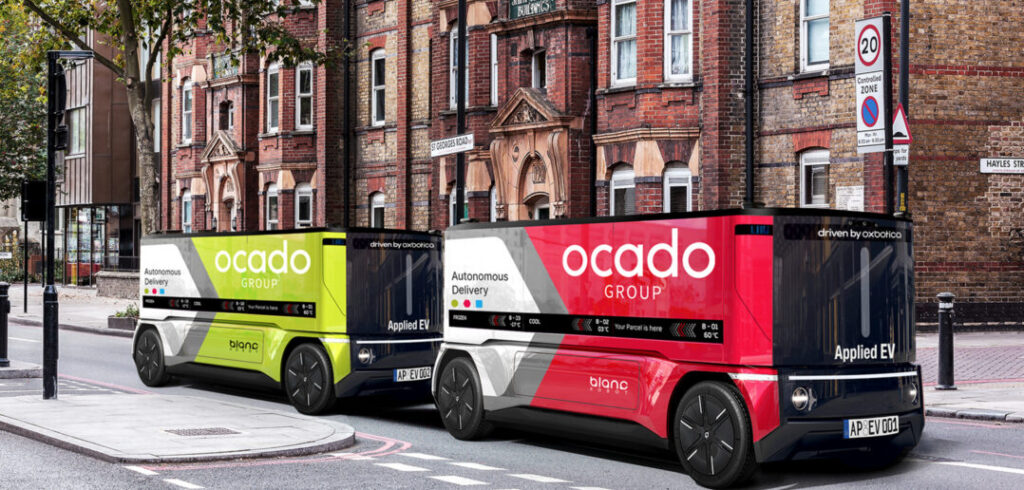During an exclusive event held at the prestigious Lloyd’s of London building last week to explore the future of autonomy, ADAS & Autonomous Vehicle International sat down with Rebecca Marsden (above), Oxbotica’s recently appointed VP of risk and insurance, to hear how she considers insurance as essential in enabling self-driving technology at scale.
With over 17 years international experience across insurance underwriting and financial services, Marsden is now responsible for Oxbotica’s global risk management and insurance strategy. By providing insurance expertise and innovative solutions, Oxbotica hopes to remove some of the barriers to entry currently faced by companies across the autonomous vehicle ecosystem.
Before accepting her new post in February this year, Marsden most recently served as head of innovation at Apollo ibott 1971 – a dedicated syndicate at Lloyd’s of London – where she specialized in data-driven underwriting with a particular focus on emerging markets, including new mobility and the sharing economy.
While at Apollo ibott 1971, Marsden led the successful creation and underwriting of Oxbotica’s first zero-occupancy autonomous vehicle journey on a publicly accessible road in 2022 (see video below). “This was a first-of-its kind, bespoke crafted insurance solution designed to address the unique risks associated with full driver-out operation of a vehicle designed with neither a driver’s seat nor steering wheel,” she explains.
“This was a critical milestone for the autonomous vehicle ecosystem – self-driving vehicles across all vertical market applications will be profoundly valuable to the world, but the business case is predicated on the absence of a human driver, distinct from self-driving vehicles with a ‘safety driver’,” continues Marsden.
“The key to creating this fit-for-purpose, data-driven insurance solution was to acknowledge the need for a new approach to assessing risk, which by necessity was not wedded to the traditional metrics associated with human drivers, nor pre-existing siloes of insurance categorized risk. What was required was an autonomous vehicle solution, leveraging the deep data naturally available when considering autonomous vehicle operation and bespoke language to capture this. This fit-for-purpose solution is data-driven, usage-based and deploys rating commensurate with the risks associated with each distinct Operational Design Domain.”
Having previously held positions across a range of financial institutions including AXA, Willis Towers Watson, Credit Suisse and Goldman Sachs, Marsden is well versed in utilizing data-backed insurance solutions to bring new technologies to market, and she’s clearly enthused about the journey ahead.
“The opportunity for me to be a part of Oxbotica and a part of this industry at a really important point in its growth cycle is really exciting,” she says. “A huge amount of testing and development has gone into this tech to date – its potential and capabilities are phenomenal. The next phase is to take it through to commercialization, and insurance has a very important role to play in building out a comprehensive solution for a product that will be taken to market and trusted by consumers. It’s going to be transformative – once in a lifetime or even once in a generation. We haven’t experienced anything like this since the industrial revolution.”
Peace of mind
Oxbotica has brought Marsden on board because it views insurance as a key enabler in increasing the speed of deployment of its self-driving software to market. The company, which recently received a US$140m Series C investment boost, is already supplying its software to enable self-driving vehicles in mining, agriculture, industrial logistics, grocery delivery, and urban mobility.
“Insurance is the next piece of the puzzle, providing trust in the product and an entire solution that can be offered to fleet operators and end consumers when choosing to engage with these vehicles,” says Marsden. “Part of my role will also be working closely with the regulators, along with our safety and our engineering teams, to make sure that this technology can be deployed legally on public roads, as well as off-highway.”
The current insurance market for conventional vehicles is highly product focused and driven by balance sheet protection, according to Marsden. However, she believes the advent of self-driving vehicles will require a completely new mindset and a more collaborative approach between insurers and fleet operators.
In particular, insurance companies will no longer hold a monopoly on the data used for risk assessment, with the stage now set for self-driving technology firms to become future distributors of insurance products.
“Companies like Oxbotica have an incredible depth of data at their disposal,” she notes. “Data is everything, and the potential to commercialize that data to create new products is really exciting. Working with multiple partners, we’re looking to create different ways of thinking, to make sure that all of the data created in the digital universe isn’t wasted, because it has potential far beyond being able to inform a vehicle where it needs to drive. There’s a much broader application, and we will be engaging with experts across multiple fields to really brainstorm and see what we can make.”

Insurance-in-the-loop
During the event at Lloyd’s, Oxbotica’s founder and CEO, Paul Newman, alluded to the potential of ever more powerful data and modeling to manage risk – and therefore provide insurance – much more dynamically: “Offline, the residual data from autonomy can be used to assess risk. Online, at a danger point, you can change behaviour. We call this ‘insurance-in-the-loop’.”
For Marsden, this refers to the notion of truly dynamic usage-based insurance, reflective of the risk as it manifests so that pricing is live. “It has interesting applications on a number of levels as not only does it render Insureds only paying for the actual risk on a moment-by-moment basis, but it can also inform behaviour based on risk appetite,” she says. “For example a vehicle (or indeed driver, if we consider the application beyond AVs) could decide on a route based on risk profile and insurance cost implications.”
In conclusion, Marsden chooses to emphasize one of the key messages from the event – autonomy changes everything: “The key takeaway, despite it being a challenge at times for some in the insurance market, is to remove yourself from pre-existing silos of risk. It’s an inefficient, cumbersome, restrictive way of looking at anything. You don’t find that in the tech space. You don’t find it in the engineering space. It’s something of an insurance phenomenon, where you have to label something and have walls beyond which you don’t stray: product liability, motor liability, professional indemnity, cyber – all completely separate, which isn’t fit-for-purpose when you’re talking about the horizontal deployment of autonomous software across multiple industry verticals.
“It doesn’t work if you try and stick a label on everything, because those labels shift and change with each commercial application. That’s why we’re trying to take insurers on this journey. The insurance solutions have to be bespoke. They have to be flexible. And they have to be scalable, because we’re not just talking about insuring a couple of pilots here and now – we want to be creating future-proof insurance for autonomous vehicles operating within every business on the planet with transportation in its value chain.”
Interested in Oxbotica and autonomous vehicle safety? Camilla Fowler, head of safety assurance at Oxbotica, will present ‘Preparing for safe commercial deployment of automated vehicles‘ at the ADAS & Autonomous Vehicle Technology Expo conference, June 13-15, 2023, in Stuttgart, Germany.



